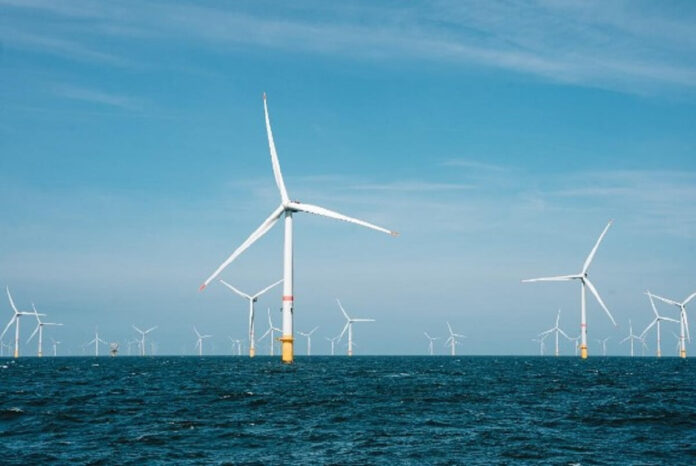The UK offshore renewables industry presents numerous challenges, including harsh weather conditions, strong tides, and challenging working environments. In light of this, it is critical to prioritize the safety and well-being of employees while optimizing operational efficiency to ensure sustainable growth and development. One way to achieve this is by implementing a safety management system.
Safety management systems provide a structured approach to identifying, assessing, and controlling risks. They are designed to enhance safety practices, minimize downtime, and improve productivity. By adopting a safety management system, offshore renewables companies in the UK can protect their employees, optimize their operations, and comply with regulatory standards.
Ensuring Employee Safety
Employee protection is a top priority in offshore renewables companies. The implementation of safety management systems plays a vital role in ensuring the well-being of employees in this sector. These systems incorporate multiple protocols and measures to minimize risks and prevent accidents.
Emergency Response
Offshore renewables companies have emergency response plans in place to ensure rapid response to any incidents that may occur. These plans involve detailed protocols for responding to various types of emergencies, including natural disasters, equipment failures, and personnel injuries. Employees are trained on these protocols and participate in regular simulations to ensure they are prepared to respond quickly and effectively in the event of an emergency.
Read Also: Powering the Mines: The Essential Role of Industrial Electricians
With safety management systems in place, offshore renewables companies are better equipped to ensure employee safety. By prioritizing employee protection through training, risk assessment, and emergency response planning, companies can maintain a safe working environment for their employees.
Standardisation of Procedures and Protocols
The introduction of safety management systems ensures that all processes and procedures are standardised. With clearly defined protocols and guidelines, employees are aware of their roles and responsibilities, and there is a reduction in the likelihood of errors and mishaps. This standardisation increases transparency and clarity, eliminates confusion and enables employees to work with greater confidence and efficiency. As a result, organisations can deliver operational excellence and consistency.
Asset Performance Management
Effective asset performance management can only be achieved when there is good visibility into the condition of assets, and their lifecycles are understood. Safety management systems provide the necessary insights into asset health and performance. This knowledge allows organisations to strategically plan maintenance and repairs, ensuring maximum uptime for critical assets. Improved asset management also limits safety risks and reduces the possibility of costly asset failures.
Process Optimisation and Continuous Improvement
Safety management systems also enable organisations to identify opportunities for process optimisation and continuous improvement. By monitoring and analysing operational data, procedures and protocols can be reviewed and refined, leading to increased efficiency and productivity. This continuous improvement and learning culture is critical for the successful growth of any organisation and is facilitated by the implementation of safety management systems.
- Standardised procedures and protocols.
- Improved asset management.
- Process optimisation and continuous improvement.
Compliance with Regulatory Standards
One of the significant benefits of implementing a safety management system in offshore renewables is the ability to comply with regulatory standards set by authorities. The offshore renewables sector is subject to stringent regulations and requirements, and non-compliance can lead to severe consequences, including legal fines, reputational damage, and suspension of operations.
A safety management system provides a framework for companies operating in the offshore renewables sector to ensure that they meet the necessary regulatory requirements. By integrating these requirements into their management processes, companies can minimize the risk of non-compliance and ensure the sustainable and responsible growth of the industry.
In addition, the implementation of a safety management system enables companies to keep up with the ever-changing regulatory landscape. As new regulations are introduced, the system can be updated to accommodate these changes, ensuring that the company remains compliant.
Risk Management and Mitigation
The offshore renewables sector involves complex work processes and environments that pose various risks to employees and assets. Safety management systems play a critical role in identifying, assessing and managing these risks, ensuring a safe working environment.
The Role of Safety Management Systems in Company Growth
Safety management systems are crucial in promoting a culture of continuous improvement and learning within offshore renewables organizations. By constantly assessing risks, identifying gaps in safety protocols and procedures, and implementing corrective actions, these systems allow companies to refine their safety practices and enhance their overall operational efficiency.
Feedback and Communication
A key component of continuous improvement is feedback and communication. Safety management systems enable employees to report incidents, hazards, and near-misses in a timely and effective manner. This feedback loop allows for the identification of potential risks and hazards before they escalate, enabling companies to take proactive measures to prevent accidents and injuries. Additionally, regular safety meetings and communication channels facilitate dialogue between employees and management, allowing for a better understanding of safety practices and procedures and promoting a shared sense of responsibility for safety in the workplace.
Training and Knowledge Sharing
Effective training is essential in ensuring that employees have the knowledge and skills necessary to carry out their job functions safely. Safety management systems enable companies to develop tailored safety training programs that address specific risks and hazards present in the offshore renewables sector. Moreover, regular refresher training and knowledge-sharing initiatives ensure that safety practices remain top of mind and that employees are up to date on the latest industry standards and regulations.
Benchmarking and Continuous Improvement
Benchmarking against industry leaders is another key component of continuous improvement. Safety management systems enable companies to compare their safety practices and procedures with those of other organizations within the industry, identifying areas for improvement and implementing best practices. Additionally, regular safety audits and risk assessments enable companies to continually evaluate and improve their safety practices, ensuring that they remain effective and up to date with the latest industry standards and regulations.
Best Practices and Industry Standards
The implementation of a safety management system (SMS) in the offshore renewables industry enables organizations to adopt best practices and industry standards that ensure employee safety and operational efficiency. By benchmarking against industry leaders, companies can identify areas for improvement and strive towards excellence.
Case Studies
Several organizations in the UK offshore renewables sector have successfully implemented SMSs, resulting in improved safety practices and enhanced productivity. For example, Company A reduced incident rates by 50% after introducing a comprehensive SMS that included risk assessments and regular safety training. Company B increased operational efficiency by 30% by standardizing procedures and implementing an SMS that prioritized employee feedback and continuous improvement.
Industry Standards
The UK offshore renewables sector is subject to regulatory standards set by industry bodies such as RenewableUK and the Health and Safety Executive (HSE). SMSs help organizations comply with these standards and promote responsible growth within the industry. The International Organization for Standardization (ISO) also provides guidelines for SMS implementation, ensuring a standardized approach across industries.
Benchmarking and Learning
Implementing an SMS enables organizations to benchmark against industry standards and learn from best practices. By sharing knowledge and experiences, companies can continuously improve their safety practices and optimize their operations. With a culture of continuous improvement and a commitment to learning, the UK offshore renewables sector can strive towards sustainable and responsible growth.
Why Implement a Safety Management System
The UK offshore renewables sector has seen significant growth in recent years, driven by the increasing demand for clean energy. Along with this growth comes a growing need to ensure the safety and well-being of employees working in this sector. Implementing a safety management system is an effective way of mitigating risks and ensuring that employees are protected while working in offshore renewables.
Ensuring Employee Safety
One of the primary benefits of implementing a safety management system in offshore renewables is the protection it provides to employees. Such systems typically include measures to minimize risks, prevent accidents, and ensure that employees are equipped with the necessary safety equipment and protocols to perform their duties safely. These measures help maintain a safe working environment and enable employees to carry out their work with the confidence that their safety is a top priority.
Enhancing Operational Efficiency
Safety management systems can also have a significant impact on operational efficiency in offshore renewables. By standardizing procedures and protocols, such systems streamline processes, minimize downtime due to accidents or other safety-related incidents, and improve productivity. This efficiency not only improves the bottom line but also enables organizations to deliver their projects on time and with the quality expected by their customers.
Compliance with Regulatory Standards
The offshore renewables sector is subject to strict regulatory standards and guidelines governing safety and environmental protection. Implementing a safety management system ensures that companies comply with these regulations, avoiding costly fines or penalties and contributing to the sustainable and responsible growth of the industry. By adhering to these standards, companies can also build trust with stakeholders, including customers, investors, and regulators.
Risk Management and Mitigation
Safety management systems play a key role in identifying, assessing, and managing risks in offshore renewables. By using risk management tools and strategies, like offshore tags companies can quickly and effectively mitigate potential risks, reducing the likelihood of accidents or other safety-related incidents. Such systems also enable organizations to continuously monitor and improve their risk management processes, ensuring that they remain up to date and effective.
Continuous Improvement and Learning Culture
Implementing a safety management system promotes a culture of continuous learning and improvement within offshore renewables organizations. By providing feedback, training, and knowledge sharing opportunities, such systems enable employees to build their skills and capabilities, stay up to date with the latest safety practices, and develop innovative solutions to safety-related challenges. This culture of continuous improvement not only enhances safety but also supports organizational growth and development.
Conclusion
In conclusion, implementing a safety management system is essential in ensuring the safety and well-being of employees in offshore renewables. Such systems offer several benefits, including enhanced operational efficiency, compliance with regulatory standards, and a culture of continuous improvement and learning. By prioritizing safety, offshore renewables companies can achieve sustainable and responsible growth, build trust with stakeholders, and maintain their reputation as industry leaders.
FAQ
Q: What is a safety management system?
A: A safety management system is a set of policies, procedures, and protocols designed to ensure the safety and well-being of employees in the offshore renewables sector. It includes measures to identify, assess, and mitigate risks, as well as guidelines for emergency response and incident reporting.
Q: Why is implementing a safety management system important?
A: Implementing a safety management system is crucial for offshore renewables companies to protect their employees and assets. It helps prevent accidents, minimize downtime, and ensure compliance with regulatory standards. It also promotes a culture of continuous improvement and learning, leading to enhanced operational efficiency.
Q: How does a safety management system enhance operational efficiency?
A: A safety management system improves operational efficiency in offshore renewables by establishing standardized procedures and protocols. These help streamline processes, minimize errors, and reduce the risk of accidents or delays. By optimizing workflow and productivity, companies can achieve cost savings and maximize their operational output.
Q: How does a safety management system ensure compliance with regulatory standards?
A: By implementing a safety management system, offshore renewables companies can adhere to the regulatory standards set by authorities. This includes complying with health and safety guidelines, environmental regulations, and industry-specific requirements. Maintaining compliance not only safeguards the well-being of employees but also contributes to the sustainable growth of the industry.
Q: What is the role of a safety management system in risk management and mitigation?
A: Safety management systems play a vital role in identifying, assessing, and managing risks in the offshore renewables sector. They enable companies to develop comprehensive risk assessment processes, implement preventive measures, and establish incident response plans. By effectively mitigating risks, organizations can maintain a safe working environment and minimize potential disruptions.
Q: How does a safety management system promote continuous improvement and a learning culture?
A: Safety management systems foster a culture of continuous improvement and learning within offshore renewables organizations. They encourage feedback and suggestions for improvement, provide ongoing training and development opportunities, and facilitate knowledge sharing among employees. This commitment to learning and growth enhances safety practices and contributes to the overall success of the organization.
Q: What are some best practices and industry standards enabled by safety management systems?
A: Safety management systems enable offshore renewables companies to adopt industry best practices and adhere to recognized standards. This includes benchmarking against industry leaders, implementing proven safety protocols, and embracing technological advancements to enhance safety measures. By aligning with industry standards, organizations can demonstrate their commitment to excellence and maintain a competitive edge.








































